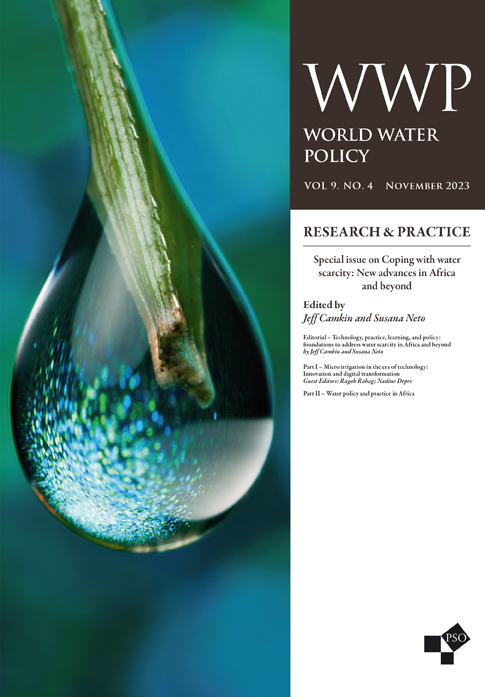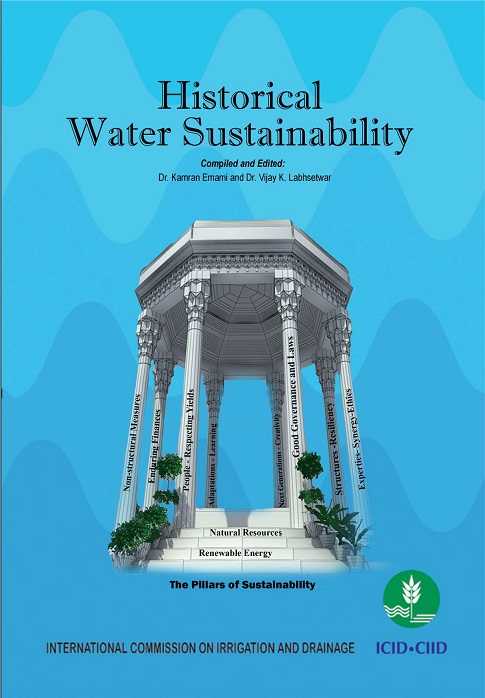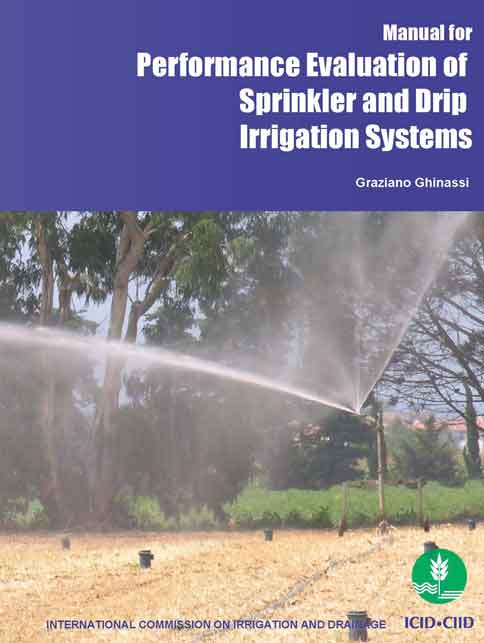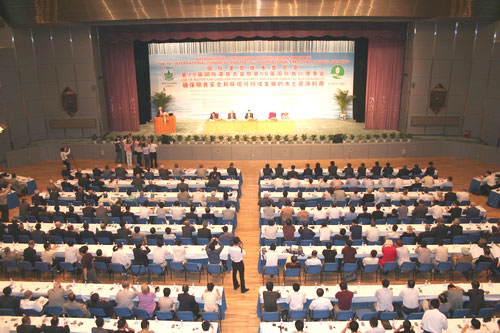DIRECT MEMBER - COMPANY

(9317) Greenhouse Gas
Greenhouse gases are those gaseous constituents of the atmosphere, both natural and anthropogenic, that absorb and emit radiation at specific wavelengths within the spectrum of infrared radiation emitted by the Earth’s surface, the atmosphere, and clouds. This property causes the greenhouse effect. Water vapor (H2O), carbon dioxide (CO2), nitrous oxide (N2O), methane (CH4), and ozone (O3) are the primary greenhouse gases in the Earth’s atmosphere. Moreover, there are a number of entirely human-made greenhouse gases in the atmosphere, such as the halocarbons and other chlorine and bromine-containing substances which are dealt with under the Montreal Protocol. Beside CO2, N2O, and CH4, the Kyoto Protocol deals with the greenhouse gases sulfur hexaflouride (SF6), hydrofluorocarbons (HFCs) and perfluorocarbons (PFCs).
Related items you may like

Workbody

Workbody

Event

Event

Event

Event

Event

Event

Event

Publications

Publications

Publications

Publications

Publications

Publications

Publications

Publications

Publications

Publications

Publications

Publications

Publications

Publications

Publications

Publications

Publications

Publications

Publications

Publications

Publications

Publications

Publications

Publications

Publications

Publications

Publications

Publications

Publications

Publications

Publications

Publications

Publications

Publications

Publications

Publications

Publications

Publications

Publications

Publications

Publications

Publications

Publications

Publications

Publications

Publications

Publications

Publications

Publications

Publications

Publications

Publications

Publications

Publications

Publications

Publications

Publications

Publications

Publications

Publications

Publications

Publications

Publications

Publications

Publications

Publications

Publications
Irrigation
Sources of Irrigation
Irrigation History +
Sources of Irrigation +
IMPROVING SOIL MOISTURE +
Ponds +
Tanks +
Diversion Weirs +
Dams and Reservoirs +
Groundwater +
Conjunctive Water Use +
Wastewater +
Poor Quality Water +
Application of Irrigation water
Canal Irrigation +
Flood Irrigation +
Deficit Irrigation +
Supplemental Irrigation +
Sprinkler Irrigation +
Drip Irrigation +
Lift Irrigation +
Centre Pivot Irrigation +
Tidal Irrigation +
Micro-Irrigation Technologies for Small Holders +
Automatic Irrigation Systems +
Pressurized Irrigation +
Irrigation in Viticulture +
Purpose of Irrigation
Instruments and implements of Irrigation
Pumps +
Centrifugal Pumps +
Submersible Pumps +
Turbine and Jet Pumps +
Conveying Pipes +
Sprinklers +
Drippers +
Canal Automation Systems +
Irrigation Management
Economics of Irrigation System +
I&D System Types +
I&D Investment Functions +
I&D Management Issues +
Participatory I&D Management +
Equity in Irrigation +
Irrigation Services +
Irrigation and environment
Pollution and Irrigation +
Irrigation and Climate Resilience +
Environmental Aspects of Irrigation +
Environmental Impacts of Irrigation +
Green Lawn Irrigation +
Safe Use of Waste Water in Irrigation +
Organic Agriculture +
Soil Health +
Soil Health Management +
Quality of Irrigation Water +
Capacity Development
Drainage
Drainage Types and Systems
Agricultural Drainage +
Field Drainage systems +
Canal Irrigation and Drainage +
Surface Drainage Systems +
Subsurface Drainage +
Mole Drainage +
Bio-Drainage +
Regional Bio-Drainage +
Drainage Issues
Dictionary - Conjunctive Water Use Terms
- Surface water hydrology
- Geohydrology, Hydrogeology or Groundwater hydrology
- Hydrological year, or Water year
- Headwater, or Headwaters
- Slush, or Watery mud
- Snowmelt, or Snow water
- Water-equivalent of snow, Snow water equivalent
- Drainage area, Drainage basin, River basin, Catchment area, Catchment basin, Catchment, Watershed
- Experimental basin, or Experimental watershed (USA, AU)
- Water parting, Drainage divide, Divide, Watershed divide, Watershed boundary, Topographic divide
- Storm runoff or Storm-water runoff
- Groundwater runoff
- Watershed leakage
- Headwater storage
- River basin management, Watershed management, or River management
- River basin model, or Watershed model (US)
- Ungauged basin, or Ungaged watershed (US)
- Water balance, or Water budget
- Groundwater storage
- Groundwater province
- Subsurface water, Underground water, or Subterranean water
- Groundwater
- Zone of aeration, Aeration zone, Zone of suspended water, or Unsaturated zone
- Belt of soil water
- Interstitial water
- Suspended water
- Capillary groundwater, or Fringe water
- Intermediate water
- Vadose water, Gravity suspended water, or Gravitational water
- Groundwater table
- Free groundwater, Phreatic water, or Non-artesian water
- Confined water, or Confined groundwater
- Perched water, or Perched groundwater
- Semiperched groundwater
- Fixed groundwater
- Connate water
- Adsorption water
- Attached groundwater
- Cavern water
- Cavern water reservoir
- Fissure water, or Fault water
- Juvenile water
- Metamorphic water
- Meteoric water
- Pore water
- Primitive water
- Rejuvenated water
- Water of compaction
- Water of infiltration
- Influent water
- Water of condensation
- Groundwater flow
- Artesian water
- Groundwater reservoir
- Water-bearing media or Water-bearing strata
- Groundwater artery
- Groundwater divide
- Water-table spring
- Water-table contour, or Groundwater contour
- Hydro-isobaths, or Isobaths of water table
- Belt of fluctuation of water table, or Belt of phreatic fluctuation
- Phreatic decline, or Decline of water table
- Cone of water-table depression, or Cone of pumping depression
- Phreatic fluctuation, or Fluctuation of water table
- Groundwater cascade
- Groundwater dam
- Highest stage of the water table, or Phreatic height
- Groundwater ridge
- Interstream groundwater ridge
- Groundwater mound, or Groundwater hill
- Groundwater trench
- Groundwater withdrawal, or Groundwater extraction
- Water table
- Water surface (groundwater)
- Phreatic low, or Lowest stage of the water table
- Natural water table
- Profile of water table
- Perched water table
- Semiperched water table
- Field capacity, Normal field capacity, Normal moisture capacity, Maximum field carrying capacity, Field capillary (moisture) capacity, Effective water-holding capacity, Specific retention
- Effective velocity (of groundwater), Actual velocity (of groundwater), True velocity (of groundwater), or Field velocity (of groundwater)
- Apparent velocity (of groundwater)
- Average velocity (of groundwater)
- Critical velocity (of groundwater )
- Groundwater turbulent flow
- Groundwater recharge
- Groundwater balance, or Groundwater budget
- Groundwater increment, or Groundwater accretion
- Groundwater decrement
- Groundwater inventory
- Groundwater equation
- Groundwater management
- Groundwater model
- Absorbed water
- Groundwater balance
- Groundwater basin
- Zone of fluctuation of water table, or zone of phreatic fluctuations
- Dead water
- Water surface slope
- Water-stage recorder, or Water-level recorder
- Freshwater
- Surface water
- Watershed
- Ponded water
- Freshwater lake
- Centimetre of water
- Head of water in metres
- Head of water in metres
- Backwater
- Backwater curve
- Backwater effect
- Bed building stage of river, or Mean water stage of river
- High water training, or Training for discharge
- Low water training, or Training for depth
- Mean water training, or Training for sediment
- Tail water erosion
- Moisture content, Water content or Moisture percentage
- Water-depth ratio
- Hygroscopic moisture, Hygroscopic water, or Moisture of condensation
- Capillary moisture, or Capillary water
- Combined water
- Bound water
- Imbibation moisture, or Water of imbibation
- Water of saturation
- Water of supersaturation, or Water of dilation
- Moisture-holding capacity, Saturation capacity or Maximum water capacity
- Actual water deficiency
- Unavailable soil moisture, or Unavailable water
- pF of soil water
- Adhesive water, or Pellicular water
- Soil water zone
- Available water
- Soil water deficit
- Soil water tension
- Plerotic water
- Superfluous water
- Gravitational water
- Waterlogging
- Waterlogged low land
- Slack water, or Slack tide
- Tidal water level
- Low water of ordinary spring tides (LWOST)
- High water line of tide
- Indian spring low water
- Watershed management
- Operation waste, or Escaped water
- Waterway
- Standard waterway, Theoretical waterway, or Normal waterway
- Lacey`s waterway, or Lacey`s wetted perimeter
- Contracted waterway
- Dewatering
- Surface area of reservoir, or Maximum water surface area
- Water surface
- Maximum water level
- Retention water level, Top water level, Normal top water level, Full supply level, or Normal water level
- Exceptional water level, or Abnormal water level
- Normal water surface elevation, Normal water level, Conservation water level, Storage level, Normal pool level, or Conservation storage level
- Waterstop
- River sluices, Waste outlets, or Dewatering outlets
- Control house
- Water intake test
- Pore pressure, Pore water pressure, or Neutral stress
- Hydroelectric power house, Power house building, or Power house superstructure
- Water turbine
- Water hammer
- Valve chamber, or Valve house
- Fuse plug, or Breaching section
- Fusegates
- Water seal
- Cup basin type water seal
- Tilted outlet type water seal
- Obstruction weir type water seal
- Baby siphon type water seal, or Maramsilli baby siphon type water seal
- Auxiliary siphon type water seal
- Overfall weir type water seal, or Priming weir type water seal
- Mechanically induced water seal
- Tudel type water seal, Stepped type water seal, Offset type water seal, or Joggle type water seal
- Clear overfall type water seal
- Baffle type water seal
- Stilling basin, Tumble way, Hydraulic energy dissipator, Water-stilling device, or Energy dissipating device
- Water cushion, Stilling pool, or Cistern
- Tailwater rating curve, or Downstream stage discharge curve
- Water-sediment complex
- Water level diagram
- Constriction water-meter
- Mixed water levels control gate
- Flushing water
- Superfluous water
- Extra water, or Escapages
- Surplus water
- Excess water, or Surcharge water
- Waste water
- Lockage water
- Thrift basin chamber, Economizing chamber, Water saving chamber, Thrift lock
- Headwater
- Tailwater
- Causeway
- Cut-water
- Sharp (nose) cut-water, or Pointed (nose) cut-water
- Blunt (nose) cut-water
- Circular (nose) cut-water, or Half round cut-water
- Segmental cut-water
- Straight (line, surface) sharp cut-water, Equilateral cut-water, or Sixty degree straight sharp cut-water
- Elliptical cut-water
- Asymmetrical (nose) cut-water
- Ease-water, Fairing
- Overall waterway
- Clear waterway, Clear span
- Water mill
- Water flour mill
- Pelton wheel, Pelton water wheel, Tangential turbine
- Groundwater conservation
- Groundwater mining
- Groundwater overdraft
- Water allowance
- Integrated Water Resources Management
- Water right
- Water sales
- Water account
- Water requirement
- Period of shortage of water
- Excess water
- Water-right
- Block system (a term used in India in the States of Maharashtra and Gujarat)
- Waterman, or Water bailiff
- Watercourses
- Sub-watercourses
- Down the watercourse turn
- Round the watercourse turn
- Levee district, District water board, or Water board of polder
- Groundwater storeys
- Confined-water well
- Observation well, Groundwater station, Monitor well, or Piezometer
- Depleted phreatic surface, or Depleted water table
- Cone of depression, Cone of pumping depression, Cone of influence, Cone of exhaustion, Cone of water table depression, or Cone of pressure relief
- Artesian water power
- Prospecting (groundwater)
- Dowsing, Water witching, or Divining
- Dowser, Divining rod, Dipping rod, Water witching stick, or Wiggle stick
- See-saw water lift, Picotah, Picottah, Piccota, or Pikota
- Improved water wheel, Chakram
- Water ladder, Chinese dragon wheel, Rahad
- Pump house
- Diffuser, or Diffuser vanes
- Water wheel
- Undershot water wheel
- Irrigation from groundwater
- Irrigation by flood water spreading
- Sailab irrigation (a term used in India and Pakistan)
- Preliminary watering
- First watering
- Recycling system, Reuse system
- Diffuser (fixed)
- Distribution pattern (of a sprinkler diffuser)
- Range (of a sprinkler or diffuser)
- Minimum operating pressure (of a sprinkler or diffuser)
- Test pressure (of a sprinkler or diffuser)
- Mini-diffusers
- Mini-diffusers
- Injected water ratio, or Driving water ratio
- Irrigation water
- Profitable crop water requirement, or Unit water requirement
- Water requirement, Net water requirement, Total water requirement
- Optimum water requirement
- Irrigation water requirement, Irrigation need
- Critical water deficit
- Possible water expenditure
- Crop water requirement
- Actual water income
- Desired water income
- Duty, or Water duty
- Designed duty of water
- Economic water duty
- Consumptive water use or Consumptive use
- District consumptive use
- Optimum consumptive use
- Seasonal consumptive use
- Effective water use
- Non-beneficial consumptive use
- Water application efficiency
- Water storage efficiency
- Irrigation efficiency, Farm irrigation efficiency, Farm delivery efficiency, Water conveyance and delivery efficiency, or Overall efficiency
- Irrigation water-requirement
- Available soil water storage
- Field water balance
- Groundwater table
- Method of water delivery
- Peak period crop water requirements
- Soil water stress
- Soil water content
- Soil water tension
- Total available soil water storage
- Total soil water storage
- Crop water use efficiency or Crop water use index
- Irrigation water use efficiency
- Level of satisfaction of the water requirement of users
- Surface water
- Perched water table
- Groundwater table
- Watershed
- Artesian water
- Water bearing
- Excess water
- Field capacity, Field moisture capacity, Normal field capacity, Normal capacity, Capillary capacity, Maximum field carrying capacity, Field capillary (moisture) capacity, Effective water holding capacity
- Free water
- Phreatic water
- Soil water head
- Total head, Total hydraulic head or Total soil water potential
- Unconfined water
- Water devide
- Backwater gate
- Water gate
- Waterproof cement
- Water repellent cement
- Water-reducing agent, or Wetting agent
- Water-repelling agent
- Water-cement ratio
- Moist curing, Water curing
- Bulk density, Void content, Specific gravity, Water absorption
- Water paints
- Water coffer dam
- Pump house, or Pumping station
- Multi-use bit
- Safety fuse
- Batchers, Aggregate batcher, Water batcher, Cement batcher
- Dewatering
- Semi-automatic field water distribution system, or Partially automatic system
- Water level control system (pumps)
- Pricing - Users` fees
- Users Training
- User fees
- Water resources of artificial origin
- Water erosion
- Headwater erosion
- Aggressive water
- Total potential (of soil water)
- Soil water pressure
- Water content
- Soil Water Characteristics Curve
- Differential water capacity
- Soil water diffusivity
- Water control
- Watershed management
- Land-use-capability classes
- Grassed waterways, or Sod waterways
- Water salinity
- Waste water re-use
- Freshwater peat
- Water Resource
- Non‑consumptive use
- Cold‑water fishery
- Warm‑water fishery
- Greenhouse effect
- Refuse
- Organic refuse
- Inorganic refuse
- Water pollution
- Water quality
- Waterborne diseases
- Water disturbance
- Groundwater contamination
- Industrial wastewater
- Raw water
- Reclaimed water
- Direct reuse
- Receiving waters
- Cooling water
- Wastewater
- Sanitary wastewater
- Municipal wastewater
- Domestic sewage, Domestic effluents, Domestic wastes, or Domestic wastewater
- Sullage water
- Stormwater runoff
- Stormwater overflow:
- Combined wastewater
- Compatible industrial wastewater
- Wastewater reclamation, waste water treatment
- Clarified wastewater
- Dewatering
- Decomposition of wastewater
- Coagulated wastewater
- Filtered wastewater
- Disinfected wastewater
- Oxidized wastewater
- Slow rate wastewater land treatment
- Rapid infiltration wastewater land treatment
- Overland flow wastewater land treatment
- Reuse
- Indirect reuse
- Water quality management
- Water quality standards
- Drinking water standards
- Anti‑degradation clause
- Composite water sample
- Water quality criteria
- Water penetration
- Dystrophic water
- Drinking water supply
- Potable water
- Soft water
- Hard water
- Brackish water
- Salt water intrusion
- Surface water problem
- Water‑gathering surface
- Water neutral surface
- Water‑spreading surface
- Ground-water table control ditch
- Groundwater flooding
- Watershed
- Flood mark, High watermark, or Rack mark
- Flood meter, or Water level gauge
- Highest high water
- Fuseplug levee
- Overflowing, or Overtopping by high water level
- Water-retaining side, Wet side, or Outer side of the dike
- Floodplain land use planning
- Houses and structures raising
- Watercourse law
- Multiuser
- User-friendly program
- Mouse
- Water tunnel
- Refraction (of water waves)
- Diffraction (of water waves)
- Project, Scheme, Water project, or Water resources development project
- Conjunctive irrigation planning
- Watershed project
- Municipal water
- Industrial water
- Domestic water
- Commercial water
- Public water
- Recreational uses of water
- Land-use pattern
- Agricultural water use
- Artificial groundwater recharge
- Groundwater system, or Groundwater basin
- Kanat, Foggara, Karez (used in Baluchistan), Rhettara (used in Morocco), or Qanat (used in Iran)
- Land use
- Water conservation
- Watercourse
- Water management
- Water policy
- Water resources
- Heavily modified water body
- Surface water body
- Water services
- Water resources appraisal
- Water resources survey
- Available water supply
- Phases of water resources development
- Underground water basin
- Partially developed underground water basin
- Fully developed underground water basin
- Groundwater investigations, or Geohydrological investigations
- Geochemical and geothermal water surveys
- Increment in land revenue, Water advantage rate, or Canal advantage rate
- Water rate, Water charge, Irrigation rate, or Irrigation assessment
- Water rental
- Minimum water rental charge
- Volumetric water rate
- Occupier`s water rate, or Crop water rate
- Agreement water rate, or Lease water rate
- Differential water rate
- Domestic, municipal and industrial water benefits
- Economic value of unit of irrigation water
- Revenue value of a unit of irrigation water
- Use of facilities method
- Ceiling allocation, or Priority of use method
- User charge
- Freshwater Lens
- Greenhouse Effect
- Greenhouse Gas














